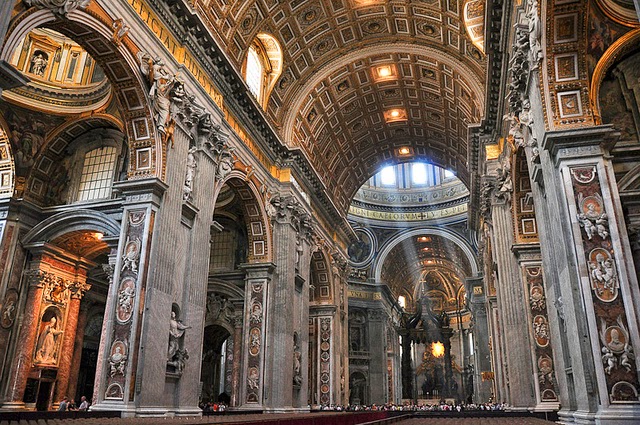Song of Songs
The Song of Songs, which is Solomon's: The Bride Confesses her Love
Osculetur Me by Giovanni Pierluigi da Palestrina
Text:
Osculetur me osculo oris sui, quia meliora sunt uber tua vino,
fragrantia unguentis optimis. Oleum euffusum nomen tuum,
ideo adulescentulae dilexerunt te.
English translation:
[She]: Let him kiss me with the kiss of his mouth: for thy love is sweeter than wine,
Smelling sweet of the best ointments. Thy name is as oil poured: therefore young maidens have loved thee.
Giovanni Pierluigi da Palestrina
Palestrina was born c. 1525 in Palestrina near Rome (Italy) and died on February 2, 1594 in Rome. He composed more than 105 masses and 250 motets and is considered to be the master of contrapuntal composition. In 1537, Palestrina was a choirboy at the basilica of Santa Maria Maggiore, where he also studied music between 1537 and 1539. In 1544, Palestrina was engaged as organist and singer in the cathedral of his native town. His duties included playing the organ, helping with the choir, and teaching music.
Having been offered various jobs in church music (some of which he declined, others which he took on, but only on his terms), eventually in 1478, in acknowledgement of his position as the most celebrated Roman musician, Palestrina was given the title of master of music at the Vatican Basilica.
The series of epidemics that swept through central Italy in the late 1570s, carried off his wife and his two elder sons, both of whom showed great musical promise. He himself fell seriously ill. Grieving over his wife's death, he announced his intention of becoming a priest, to the delight of the pope, Gregory XIII. Palestrina was considered by all the popes under whom he served as the official composer for the choir, and it is recorded that he marched at the head of the pontifical singers on the occasion of erecting the great Egyptian obelisk in the piazza of St. Peter's.

Palestrina died in Rome of pleurisy on 2 February, 1594. Palestrina's funeral was held at St. Peter's, and he was buried beneath the floor of the basilica. His tomb was later covered by new construction and attempts to locate the site have been unsuccessful.

Sources: Wikipedia, Encyclopedia Britannica
Comments
Post a Comment